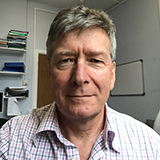 I used to joke that radiology is getting easier because as we carry out more and more imaging, soon everyone will have a previous scan with which to compare. The point being that detecting changes from a baseline set of appearances is always easier than interpreting de novo. And it’s much easier to dismiss an abnormal appearance if you can see that it looked the same a few years ago.
I used to joke that radiology is getting easier because as we carry out more and more imaging, soon everyone will have a previous scan with which to compare. The point being that detecting changes from a baseline set of appearances is always easier than interpreting de novo. And it’s much easier to dismiss an abnormal appearance if you can see that it looked the same a few years ago.
You might think that a CT scan of the abdomen, for example, is either normal or abnormal. Not so. Not only does normal anatomy vary to an astonishing degree between individuals, but all of us carry “abnormalities” which are usually harmless but which can masquerade as significant pathology. Cysts in the liver or kidneys, nodules in the lungs or adrenal glands, areas of varied bone density and a myriad other departures from a traditional view of normality are ubiquitous. As technology advances and our images become more and more detailed, the problem becomes even greater as ever smaller variances become apparent. The true skill of the radiologist is not in the detection of abnormalities—computers and even pigeons can do that—it is in making a judgment about the significance (or usually otherwise) of the very many possible abnormalities which present themselves on every examination.
The review of previous—or “prior”—imaging is the radiological counterpart of taking a clinical history and is fundamental to the interpretation of any examination.
In the days of film, the availability of previous studies could not be guaranteed but with the advent of digital archiving they can almost always be retrieved. This has the great advantage of allowing us to avoid recommendations for pointless and potentially harmful further tests—if something looks the same now as it did 10 years ago, it’s unlikely to be significant.
There is however a major downside which I call the Curse of the Priors, not the title of a medieval monastic page-turner, but the sinking feeling experienced by a radiologist on recognising that the previous study showed a subtle abnormality which was either overlooked or not considered significant at the time, but which has now developed into a life-changing or possibly life-limiting condition. The curse may then be felt most keenly by the patient who will feel badly let down when such an event comes to light.
It is a truism that the more we look the more we will find, and it is equally true that more imaging affords an ever greater number of opportunities for us to get things wrong. As an example, a recent study found that when a careful review was undertaken, around one in six patients diagnosed with a kidney cancer had an image somewhere in their file which showed at least part of the tumour at an earlier date than the date on which it was recognised. This is not the same as saying that it could or should have been recognised earlier, just that knowing the site and characteristics of the tumour later identified it is there to be seen in hindsight.
Leaving aside the very many perceptual and cognitive reasons for not seeing something in the first place, once an abnormality has been detected there is a decision to be made as to whether it might be significant and therefore whether further tests or interventions should be recommended. Radiologists like other doctors have their own individual risk acceptance profiles. Some of us are inherently disposed to avoid the chance of a false positive result if at all possible by choosing—consciously or not—to overlook abnormalities which carry only a very small risk of being significant. Others will always want to be “on the safe side” and recommend further tests if any doubt at all exists. At the far end of that spectrum lies an approach which leads to the overuse of diagnostic tests which is not only wasteful but causes real harm to patients.
Whatever the disposition of the person interpreting the study, the availability of previous imaging will almost always lead to a better decision and hopefully a better outcome. Respect the priors—generally a blessing but occasionally a curse.
Giles Maskell is a radiologist in Truro. He is past president of the Royal College of Radiologists.
Competing interests: None declared.
